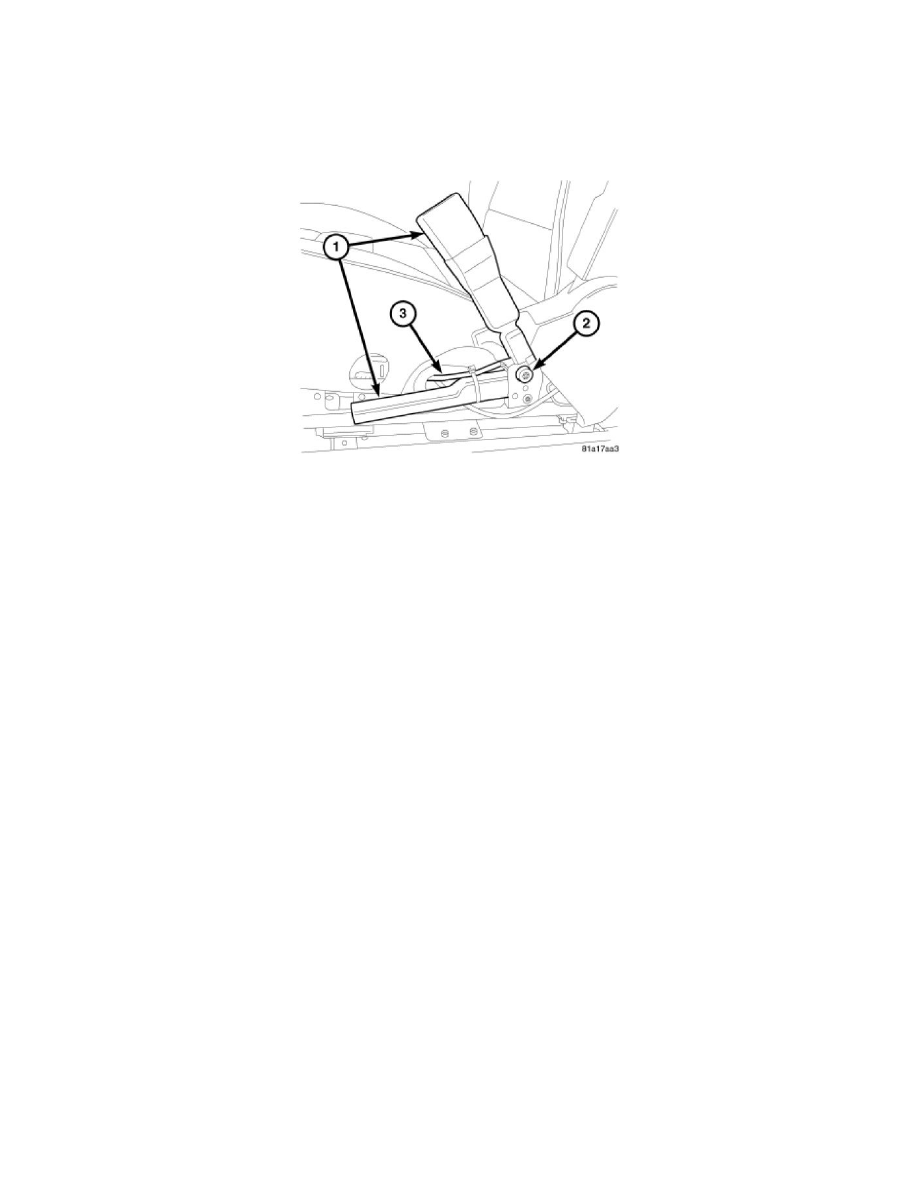Liberty 2WD V6-3.7L (2008)

Seat Sensor/Switch: Description and Operation
Seat Belt Switch
Description
DESCRIPTION
Two different seat belt switches are used in the front seat buckles of this vehicle. The driver side uses a mechanical switch, while the passenger side is
actually a Hall Effect-type sensor. The driver side switch is a small, normally open, single pole, single throw, leaf contact, momentary switch. The driver
side seat belt switch is integral to the buckle of the driver side front seat belt buckle. The passenger side switch consists of a fixed-position, Hall Effect
Integrated Circuit (IC) chip and a small permanent magnet that is integral to the passenger side front seat belt buckle. The front seat belt buckles (1) are
located on a molded plastic scabbard and secured along with the seat belt buckle tensioner mechanism by a screw (2) near the back of the inboard front
seat cushion frame.
The seat belt switches are connected to the vehicle electrical system through a two-lead pigtail wire (3) and a four-way connector shared with the buckle
tensioner squib circuits on the front seat belt buckle-half, which is connected to a wire harness connector and take out of the seat wire harness routed
beneath the front seat cushion. On the passenger side, a one kilohm diagnostic resistor is connected in parallel with the IC where the two pigtail wire
leads connect to the IC pins.
The seat belt switches cannot be adjusted or repaired. If ineffective or damaged, the entire front seat belt buckle-half and tensioner unit must be replaced.
Operation
OPERATION
DRIVER SIDE
The driver side front seat belt switch is a hard wired input to the Totally Integrated Power Module (TIPM), which provides electronic driver side seat
belt switch status messages to the ElectroMechanical Instrument Cluster (EMIC) (also known as the Cab Compartment Node/CCN) over the Controller
Area Network (CAN) data bus. The EMIC controls the seat belt indicator based upon these electronic driver side seat belt switch status message
inputs.
When the driver side front seat belt tip-half is inserted into the seat belt buckle, the switch closes the path to ground; and, when the driver side front seat
belt tip-half is removed from the seat belt buckle, the switch opens the ground path. The switch is actuated by the latch mechanism within the seat belt
buckle.
The seat belt switch is connected in series between ground and the seat belt switch sense input of the TIPM. The seat belt switch receives ground at all
times through its pigtail wire connection to the seat wire harness from a take out of the body wire harness. An eyelet terminal connector on the body wire
harness ground take out is secured beneath a ground screw on the left cowl side inner panel, beneath the instrument panel. The TIPM monitors the
condition of the driver seat belt switch circuits and will send an electronic message to illuminate the airbag indicator in the EMIC then store a Diagnostic
Trouble Code (DTC) for any fault that is detected.
The hard wired circuits between the driver side seat belt switch and the TIPM may be diagnosed using conventional diagnostic tools and procedures.
Refer to the appropriate wiring information. However, conventional diagnostic methods will not prove conclusive in the diagnosis of the switch or the
electronic controls or communication between other modules and devices that provide features of the supplemental restraint system. The most reliable,
efficient, and accurate means to diagnose the driver side seat belt switch or the electronic controls and communication related to seat belt switch
